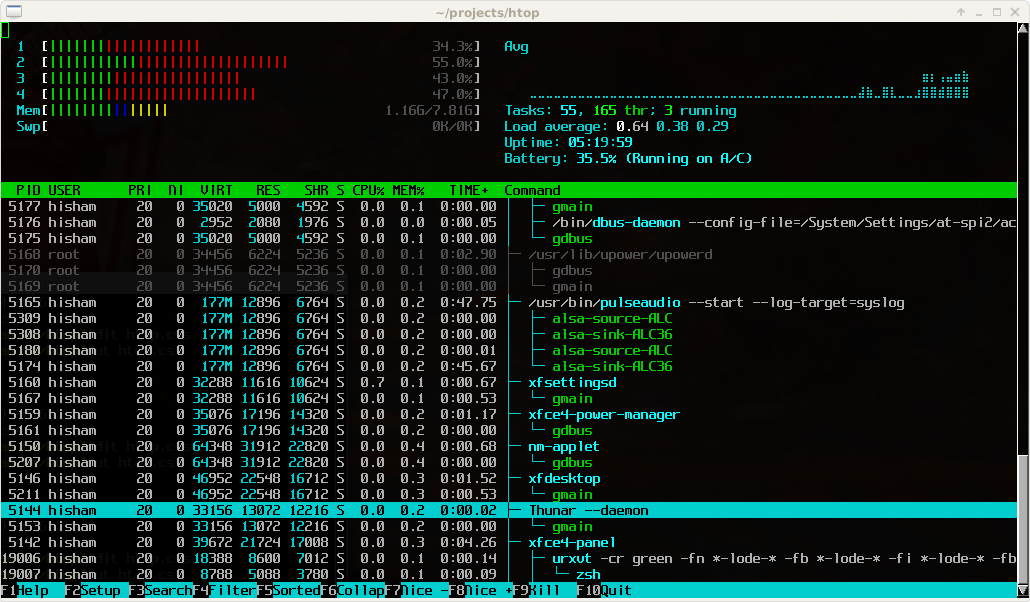

To get assistance on how to find your way with htop and best leverage the various shortcuts therein, simply hit the F1 key. Several options will be available to change for instance colors, font style of system metrics to mention a few. To make a few tweaks here and there that will determine how your output looks like, hit the F2 key. In this case, I have selected SIGKILL to ensure the process quits. Next, press the F9 functional key or the letter k and select the signal that you want to send. In this case, I have selected Jenkins with a PID of 1983. Once located, the process will be highlighted in yellow.Īfter launching htop, simply scroll to the process you want to terminate or ‘kill’. You can also search for a process by simply pressing the F3 key and typing the name of the process in the search prompt that appears at the bottom of the terminal screen.įor instance, in this case, I’m searching for the rsyslogd process in the /usr/sbin path. In the output below, I have displayed the processes in the /usr/sbin path. You will be prompted to enter the path of the process at the footer section. To filter processes, press the F4 function key. Linux processes can also be filtered according to their respective paths. To display the relationship, simply press the F5 function key. Linux processes are usually in a hierarchical order, creating a child-parent relationship. To sort using Memory Percent utilization, use the down-arrow key and hit ENTER on the PERCENT_MEM option.

By default, this is set to the PERCENT_CPU option. On the left section, scroll and select the criteria that you want to use when sorting the output. To view the output options, simply hit the F6 function key on your keyboard. Htop provides multiple options that you can use to sort your output. Let’s now shift gears and see the various options that come with the htop utility tool. To install htop run the commands below:įor Debian/ Ubuntu/Mint # apt install htopįor Fedora 22 and later # dnf install htop Using htop command Sometimes, you may get a warning when working on a system without htop installed. You can scroll up and down using the mouse or Arrow up & arrow down keys to have a view of all the running processes.Htop provides a way of killing a process without invoking its PID.System metrics are color-coded to make it easier to identify at a glance.Ability to use the mouse to interact with htop utility.Some of the advantages of using htop over top command include: This section lists all the running processes. The header section displays system metrics which include CPU, Memory and Swap utilization, running tasks, load average, and uptime. From the output see earlier on, we can clearly see that htop’s display is categorized into 3 sections:


 0 kommentar(er)
0 kommentar(er)
